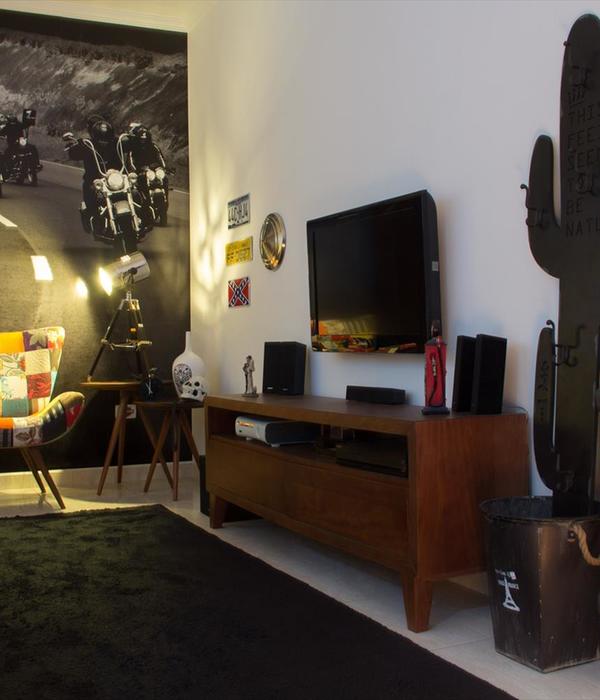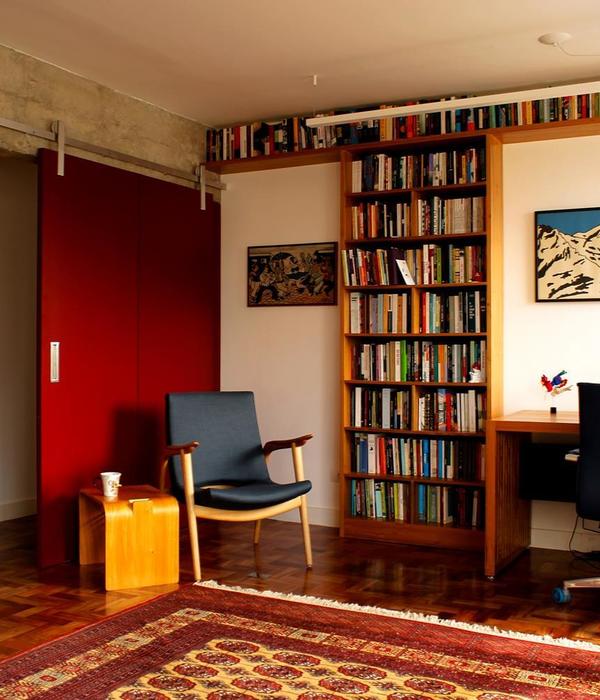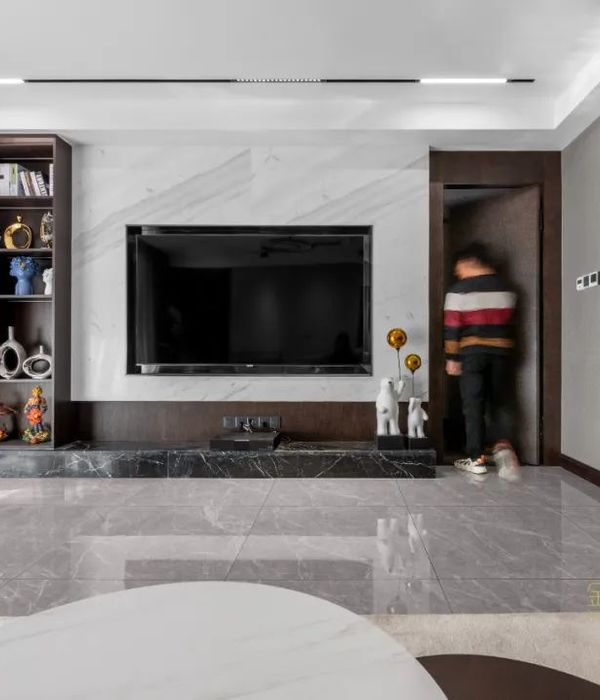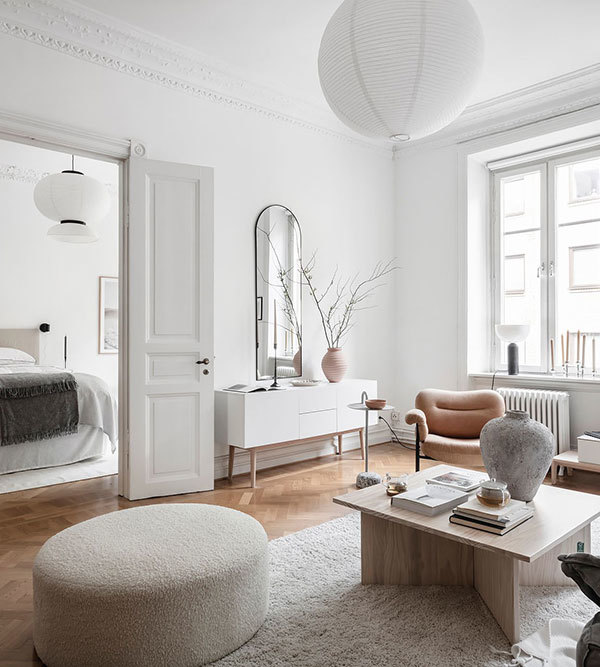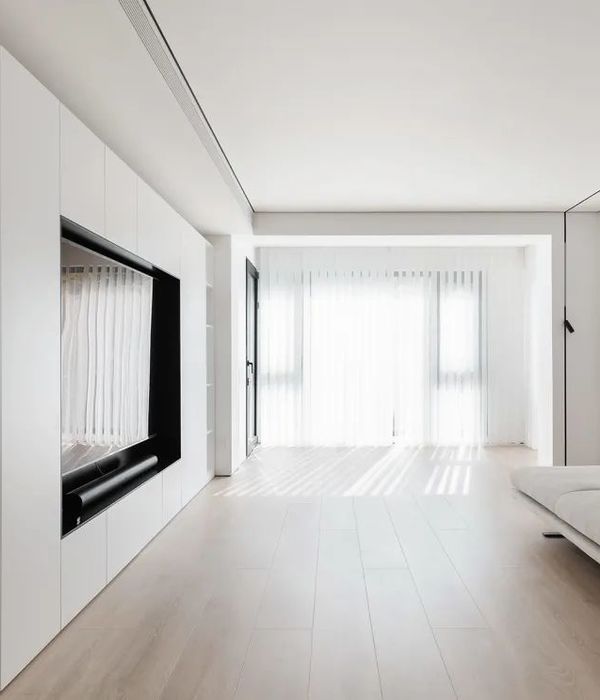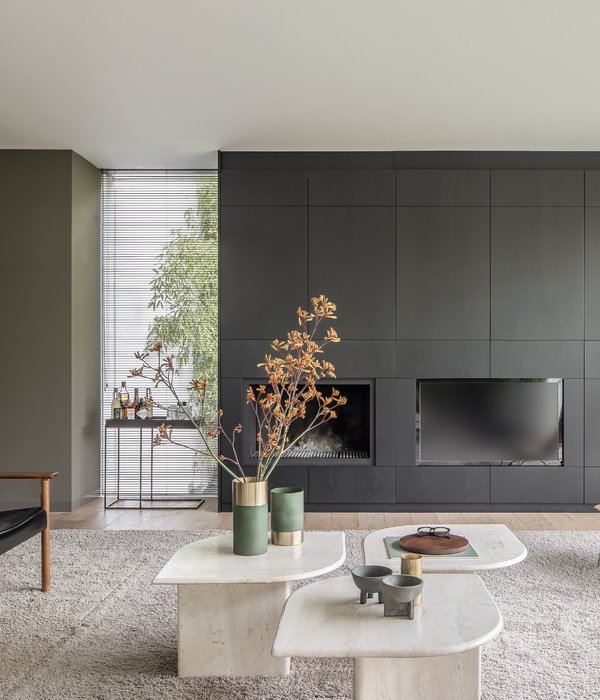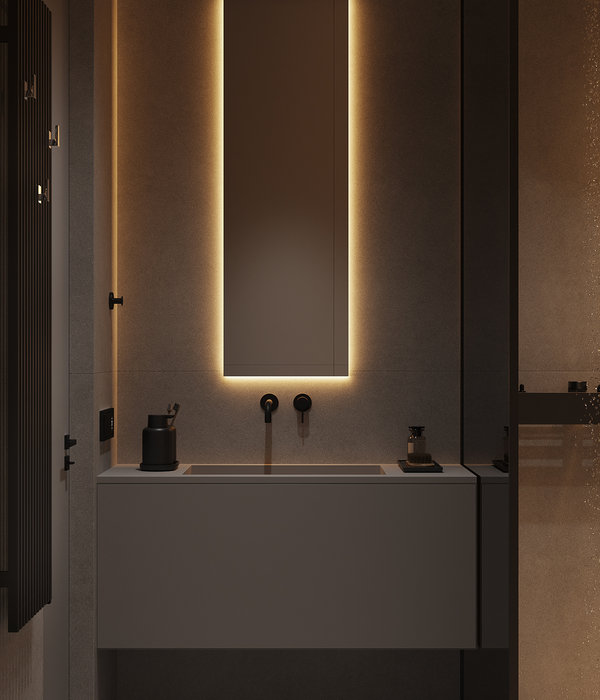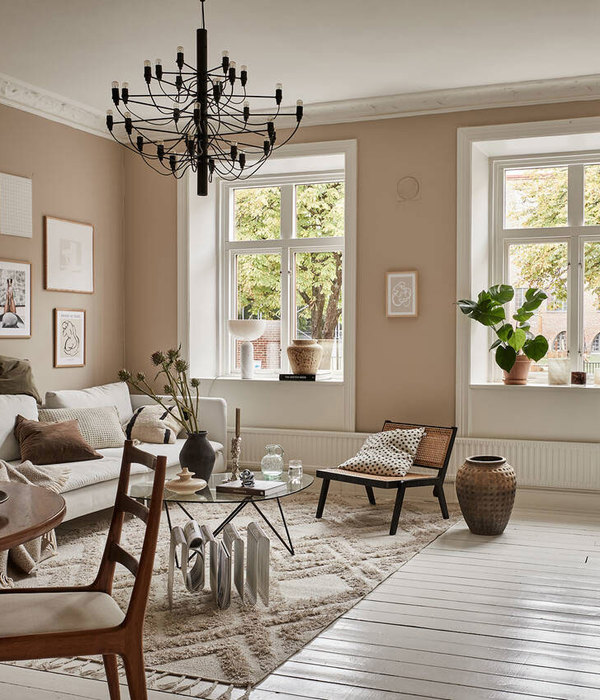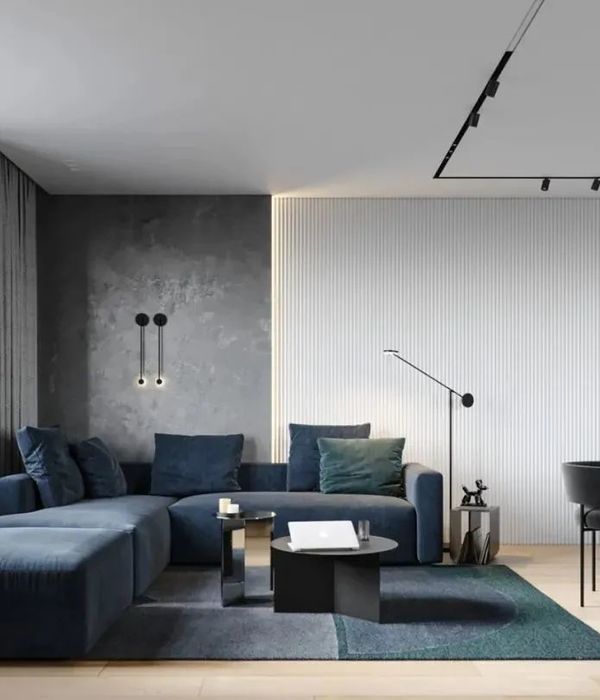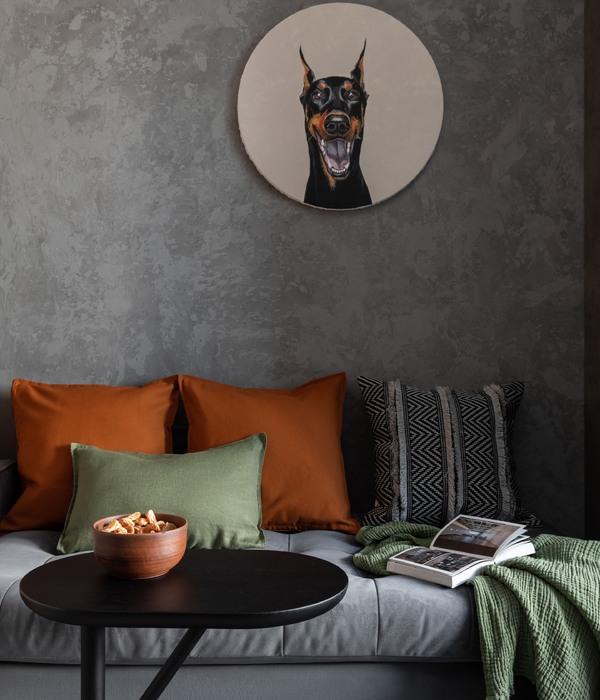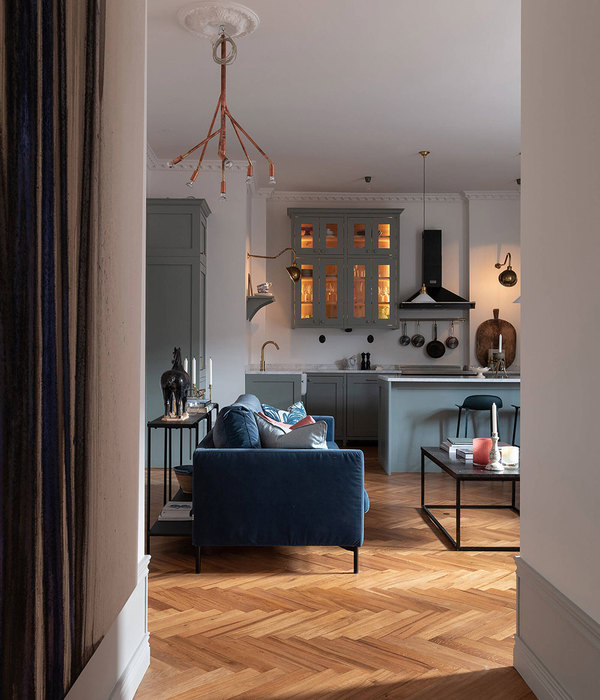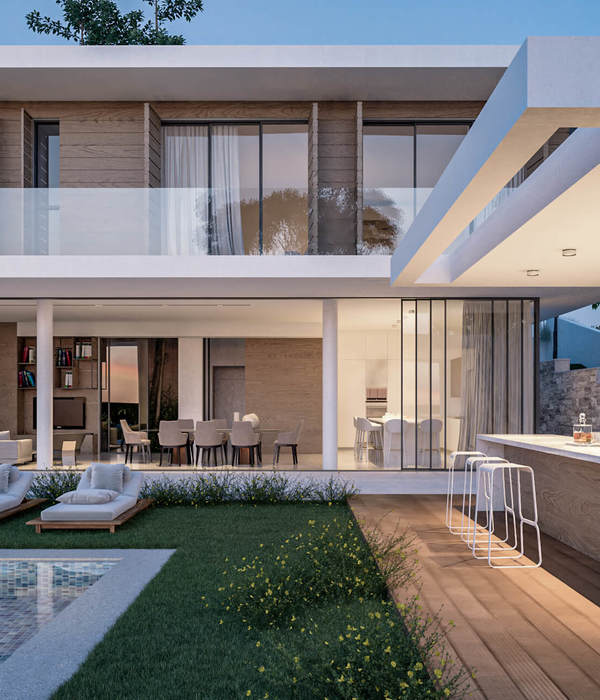架构师提供的文本描述。为宁波Alt-Life书店设计的Kokaistudio公司庆祝空间的流动性和多样性、有机的几何学和循环的概念,即旅行、终极的“人的移动者”,以及通过好奇心能够激发和维持公共空间和商业场所生活的动力。
Text description provided by the architects. Kokaistudios designed for Alt-Life Bookstore in Ningbo celebrates space fluidity and variety, organic geometries and the notion of circulation as a journey, the ultimate 'people mover', the drive capable, through curiosity, to spark and sustain life in public spaces as well as in commercial venues.
© Dirk Weiblen
德克·韦布伦
自项目启动以来,我们与客户的一个共同目标是设计一个“供人们逗留和花时间的地方”,在那里,书籍欣赏的核心功能是通过各种各样的活动加以补充和整合,使客户能够坐下来阅读、学习、参加讲习班或现场活动。一个彻底的经验,换句话说,渴望和超越简单的产品销售;宁波和该地区的一个新的生活方式目的地。
A goal we shared with our client since the project's inception was to design 'a place for people to linger and spend time in', where the core function of books' appreciation was to be complemented and integrated by a wide variety of activities, enabling customers to sit and read, to study, to take part in workshops or live events. A thorough experience, in other words, aspirational and transcending the simple selling of products; a new lifestyle destination for Ningbo and the region.
Axonometric Diagram
轴测图
一个双高的小礼堂和活动空间,以及一个专门为儿童服务的部分,连同一个茶馆,一个果汁吧,一个咖啡店和一个面包店。使这一任务复杂化的是,其中一些区域将由第三方租户独立运营(到目前为止,大部分还没有得到确认),因此,我们的设计必须保证使用的灵活性和适应多种程序和品牌标识的能力,同时也要与总体概念保持一致和一致的设计理念。
A double height small auditorium and event space and a section dedicated to children were part of the program together with a teahouse, a juice bar, a coffee shop, and a bakery. Complicating the task was the fact that some of these areas were to be operated independently by third party tenants (as yet mostly un-confirmed) thus our design had to guarantee flexibility of use and capacity to adapt to multiple programs and brand identities while still being coherent and consistent design wise with the overall concept.
© Dirk Weiblen
德克·韦布伦
Axonometric B2
轴测B2
© Dirk Weiblen
德克·韦布伦
这家书店位于1844年贺毅广场地下室,位于宁波市中心余姚区南岸。它占据了一个L形的地段,完全在地下。该方案分两层,即现有B2(1600平方米)和新增加的B1夹层(800平方米),总楼面面积接近2400平方米,分为三个不同的主要区域:书店本身、专门用于新技术、食品和饮料的区域和位于两者交汇处的灵活公共空间。
The bookstore is located in the basement of 1844 He Yi Plaza, along the South bank of Yuyaoriver, in the city center of Ningbo. It occupies a L shaped lot entirely underground. The program is articulated on two floors, the existing B2 (1600m2) and a newly added B1 mezzanine (800m2) for a resulting total gross floor area of near 2400m2 and is organized into three different main areas: the bookstore itself, an area dedicated to new technologies, food and beverage and a flexible public space located at the intersections between the two.
© Dirk Weiblen
德克·韦布伦
旅程从主要的一楼入口处开始,通过位于石砌广场中心的一个经过翻新的玻璃展馆。一个悬挂的大楼梯,设计成一个螺旋书架,把入口连接到阁楼和下面的主楼层。在白天,自然光淹没了书店内部通过这个玻璃展馆,过滤和软化半透明亚克力面板集成到白色书架模块。相反地,在晚上,来自内部的人造光照亮了玻璃展馆,使它发光;一个闪闪发光的橱柜,为书店和为它规划的许多活动。
The journey starts at the main ground floor entrance, through a renovated glass pavilion located at the center of the stoned paved square. A hanging grand staircase, designed like a spiral bookshelf, connects the entrance to the mezzanine and to the main floor below. During daytime, natural light floods the bookstore interiors through this glass pavilion, filtered and softened by translucent acrylic panels integrated to the white bookshelf modules. Conversely, at night, is the artificial light from the interiors lighting up the glass pavilion and making it shine; a shimmering showcase for the bookstore and for the many activities programmed for it.
© Dirk Weiblen
德克·韦布伦
楼梯降落在阁楼层,在那里的座位和阅读区,并继续到主层以下。四层楼梯在两层楼之间提供额外的垂直连接。在周界,墙壁上全是全高度的书架,构思成一个在所有空间展开的连续带状,在这些空间之间划分或联系专门用于不同功能的区域,引导顾客在书店中穿行,以及在书店中交替的多种类型的空间。
The staircase lands at the mezzanine level, where seating and reading areas are located, and proceeds to main floor below. Four stairs provide additional vertical connections between the two floors. Along the perimeter, walls are entirely lined with full height book shelves, conceived as a continuum ribbon unwinding along all spaces, dividing or relating among them areas dedicated to different functions, guiding customers in their journey through the bookstore, and the manifold types of spaces that alternate in it.
© Dirk Weiblen
德克·韦布伦
压缩的,封闭的空间,适合专门的功能,如儿童书店或多功能空间配备视听活动,无缝扩展为开放的双高度空间,如书店的中轴,或图书岛,专门用于家庭活动。流通区域与鼓励逗留和个人欣赏书籍或集体活动的区域交替。
Compressed, enclosed spaces, suitable for specialized functions, such as the children bookstore or the multifunctional space equipped for audio-visual events, seamlessly expand into open double height spaces like the central axis of the bookstore, or the book island, dedicated to family activities. Areas for circulation alternate with areas encouraging stay and individual appreciation of books or collective activities.
© Dirk Weiblen
德克·韦布伦
与挂在墙上的书架相反,1960年米开朗基罗·皮斯托莱托(Michelangelo Pistoletto)在瓦楞纸纸板中实现的迷宫式游乐场给了它灵感。瓦楞纸纸板是一种类似的模块化系统,可以通过独立的书架和柜台在书店里看到,在视觉上将空间划分为更小的“房间”和舒适的区域,为坐和阅读以及展示各种商品提供了更多的机会。
Counterpoint to the wall mounted shelves, formally inspired by 1960's Michelangelo Pistoletto's labyrinthine playgrounds realized in corrugated cardboard, a similarly modular system of see-through free standing shelves and counters populates the bookstore, visually dividing the space into smaller 'rooms' and cozy areas, providing additional opportunities for seating and reading as well as displaying a variety of merchandise.
© Dirk Weiblen
德克·韦布伦
几何学是流体和有机的。材料和纹理在颜色上是柔软和温暖的,受到不同性质的纸张的启发,历史上和经典上都与书籍的本质有关。
Geometries are fluid and organic. Material and textures are soft and warm in color, inspired to different qualities of paper, material historically and quintessentially related to the essence of books.
© Dirk Weiblen
德克·韦布伦
{{item.text_origin}}

